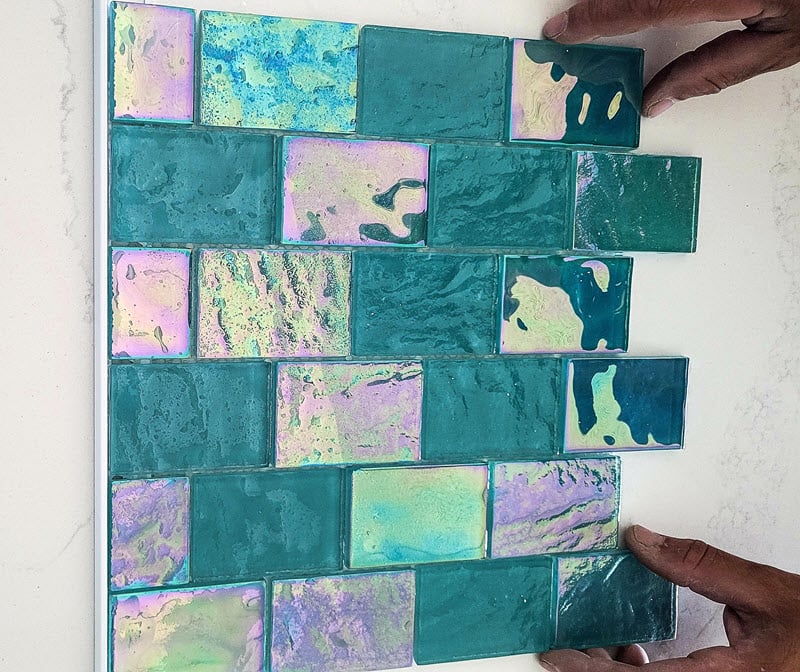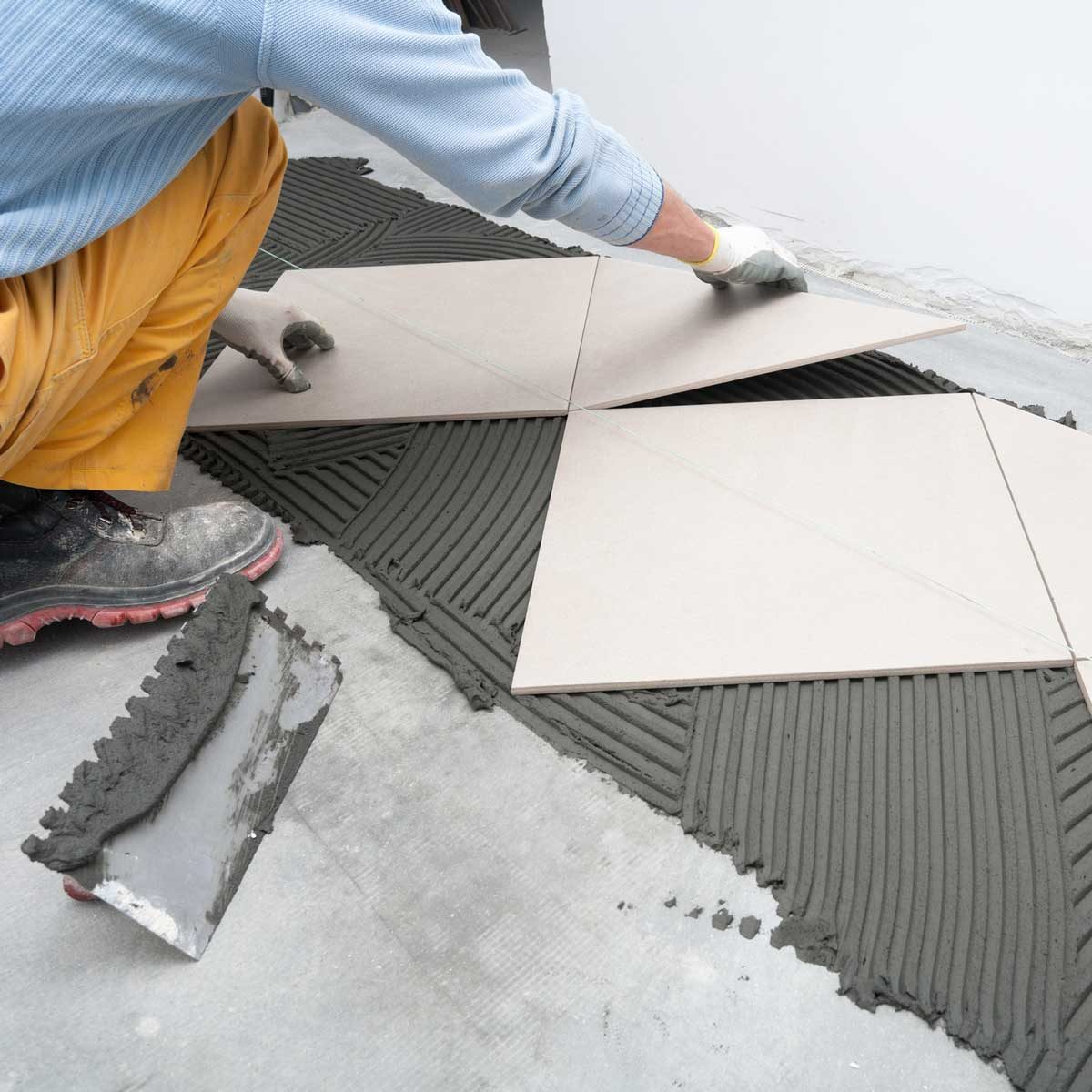
How to Become a Tile Setter: Step-by-Step Guide
Becoming a tile setter requires skill and precision. It’s a rewarding career choice with opportunities for growth.
Tile setters play a crucial role in construction, ensuring surfaces are both functional and attractive. They work with various materials, including ceramic, marble, and glass tiles. This profession demands attention to detail and a good eye for design. The journey to becoming a skilled tile setter involves several steps.
First, it’s important to understand the basics of the trade. This includes learning about different tile types and installation techniques. Training programs and apprenticeships are valuable resources for gaining hands-on experience. As you build skills, consider certifications to enhance your credibility. Networking with professionals in the field can also open doors to job opportunities. With dedication and practice, you can carve out a successful career in tile setting.

Introduction To Tile Setting
Tile setting is a skilled trade that involves precision, artistry, and a keen eye for detail. Whether crafting intricate mosaic designs or laying down ceramic tiles for a sleek kitchen finish, tile setting is both an art and a science. In this guide, we explore how to become a tile setter and dive into the essentials of tile setting. This journey will equip you with the knowledge of tiling techniques, grout application, and the importance of surface preparation.
What Is Tile Setting?
Tile setting, also known as tile installation, is the process of setting tiles on surfaces such as floors, walls, and countertops. This craft requires a combination of technical skills and creative flair. A tile setter meticulously cuts and lays tiles to transform spaces, enhancing both functionality and aesthetics. Some key aspects of tile setting include:
- Surface Preparation: Ensuring the surface is clean, level, and ready for tiles.
- Tile Craftsmanship: Cutting and placing tiles with precision.
- Grout Application: Filling gaps between tiles for a seamless look.
A tile setter works with various materials such as:
| Material | Use |
|---|---|
| Ceramic Tiles | Common in kitchens and bathrooms |
| Porcelain Tiles | Durable and water-resistant |
| Mosaic Tiles | Ideal for intricate designs |
Tile setting is not just about laying tiles. It’s about creating art through construction skills. This profession involves a deep understanding of tiling techniques and tools. A flooring contractor often collaborates with tile setters in large-scale projects, making this skill essential in the construction industry.
Importance In Construction
Tile setting holds significant importance in the construction sector. It is a vital element in home renovation and commercial projects. Tiles offer durability and aesthetic appeal, making them a popular choice in construction. Some reasons why tile setting is crucial in construction include:
- Durability: Tiles like ceramic and porcelain are long-lasting and withstand heavy foot traffic.
- Water Resistance: Ideal for bathrooms and kitchens where moisture is prevalent.
- Aesthetic Variety: Offers a wide range of colors, textures, and designs.
Proper tile installation ensures that surfaces remain functional and attractive over time. It helps prevent issues like water damage and tile shifting, which can lead to costly repairs. The craftsmanship of a skilled tile setter also adds value to properties, enhancing both residential and commercial spaces. In summary, tile setting is a blend of artistry and technical skill. It’s a crucial component of construction projects, contributing to both the structural integrity and aesthetic value of buildings. The role of a tile setter is indispensable, making it a rewarding career path for those with a passion for design and detail.
Skills Required
Becoming a tile setter is a rewarding journey into the construction trade. It requires a blend of technical skills and physical abilities. This career path involves working with ceramic tiles, grout, and various flooring materials. The craftsmanship needed for tile installation is honed through vocational training and hands-on experience. Understanding the skills required is the first step to mastering this art.
Technical Skills
Tile setters need a strong foundation in technical skills. These skills ensure precision and quality in every project.
- Tile Cutting: Accuracy is key. A tile setter must measure and cut tiles to fit specific spaces perfectly.
- Masonry Skills: Understanding the properties of different materials, like ceramic tile, is essential. This knowledge helps in selecting the right tiles and adhesives for each job.
- Grout Application: Applying grout correctly is vital for both aesthetics and functionality. It prevents water damage and secures tiles in place.
- Adhesive Application: Proper adhesive use ensures tiles stay in place over time. A tile setter must know how to apply the right amount for different surfaces.
Technical skills also involve problem-solving. You may face unexpected challenges on-site. Being able to adapt and find solutions is crucial. Training programs often cover these areas extensively, providing a solid foundation for beginners.
| Skill | Importance |
|---|---|
| Tile Cutting | High |
| Masonry Skills | Medium |
| Grout Application | High |
| Adhesive Application | Medium |
Physical Abilities
Physical abilities are equally important in the tile setting profession. The job is physically demanding and requires good stamina.
- Strength and Stamina: Tile setters often lift heavy tiles and work for long hours. Physical endurance helps manage these tasks efficiently.
- Dexterity: Working with small tiles and intricate designs demands steady hands. Precision is necessary for clean cuts and accurate placements.
- Balance: Tile setters frequently work on ladders or scaffolding. Good balance reduces the risk of accidents and ensures safety on the job site.
- Flexibility: The ability to bend and stretch is crucial. Tile setters often work in tight spaces or at awkward angles.
Regular exercise and proper body mechanics can enhance these physical abilities. They help prevent injuries and improve overall efficiency. A tile setter’s physical condition directly impacts the quality and speed of their work.
Education And Training
Becoming a tile setter involves learning specific skills related to tile installation and flooring. Education and training play a crucial role in mastering this craft. Understanding the construction industry, acquiring trade skills, and gaining hands-on experience are essential. Whether through formal education or apprenticeships, aspiring tile setters can learn tiling techniques, building codes, and home improvement essentials.
Formal Education
Formal education provides a structured way to enter the tile-setting field. Many vocational schools offer programs focused on tile installation and flooring techniques. These programs typically cover essential topics like tile selection, cutting, and placement. Students learn about different materials such as ceramic tile, as well as methods for ensuring durability and aesthetics. Programs often include:
- Basic construction industry knowledge
- Understanding of building codes
- Introduction to home improvement projects
Many schools also offer vocational training courses, focusing on practical skills. These courses are usually shorter and more intensive than traditional programs. They emphasize hands-on experience, allowing students to practice tiling techniques in real-world scenarios. Here’s a sample table of what a typical vocational program might include:
| Course | Duration | Skills Acquired |
|---|---|---|
| Introduction to Tile Installation | 3 months | Basic cutting, laying techniques |
| Advanced Flooring Techniques | 6 months | Complex patterns, material selection |
| Building Codes and Safety | 2 months | Compliance, safety protocols |
Formal education in tile setting prepares students for entry-level positions, providing a solid foundation in the necessary skills.
Apprenticeships
Apprenticeships offer an excellent way to gain hands-on experience in tile setting. They involve working under the guidance of experienced professionals in the construction industry. This method allows aspiring tile setters to learn directly from the field, acquiring trade skills through practice. Benefits of apprenticeships include:
- Real-world exposure to tiling techniques
- Understanding of building codes and standards
- Experience in home improvement projects
During an apprenticeship, participants often handle tasks such as cutting tiles, applying adhesives, and ensuring patterns align correctly. This practical training is invaluable, as it helps learners develop a keen eye for detail and a strong work ethic. Here’s a brief overview of what an apprenticeship might look like:
| Stage | Duration | Focus |
|---|---|---|
| Initial Training | 1 month | Basic tile setting tasks |
| Intermediate Projects | 3 months | Complex flooring patterns |
| Advanced Techniques | 6 months | Custom designs, specialized materials |
Apprenticeships typically last for several months, culminating in a comprehensive understanding of the tile setting trade. This path is ideal for those who prefer learning by doing and wish to dive directly into practical applications.
Tools Of The Trade
Tile setting is a rewarding career in the construction industry that requires precision and skill. As a flooring specialist, mastering the tools of the trade is essential for successful tile installation. From surface preparation to grout application, each step demands specific equipment. Understanding these tools will help you navigate remodeling projects with confidence. Whether you are an apprentice tile setter or a seasoned professional, having the right tools is vital for crafting beautiful ceramic tile designs.
Essential Tools
Tile setters rely on a variety of tools to ensure precise and efficient installations. These tools are crucial for achieving professional results in any tiling project. Below are some of the essential tools you will need:
- Trowels: Used for spreading adhesive and ensuring even coverage.
- Tile Cutters: Essential for cutting tiles to fit specific spaces.
- Spacers: Help maintain consistent gaps between tiles for a uniform look.
- Levels: Ensure tiles are laid evenly on the surface.
- Rubber Mallets: Used for gently tapping tiles into place without damage.
Each tool plays a role in perfecting your tiling techniques. For example, a trowel helps with spreading adhesive, while a level ensures your tiles are even. A tile cutter is indispensable for customizing tile shapes. Using spacers guarantees consistent grout lines, and a rubber mallet softly secures tiles. Investing in quality tools enhances your trade skills and leads to better outcomes in all tile installation and remodeling projects.
Safety Equipment
Safety equipment is as important as the tools in tile setting. Protecting yourself during tile installation prevents injuries and ensures a safe working environment. Here are key items to consider:
- Safety Glasses: Protect eyes from flying debris and dust.
- Gloves: Guard hands against sharp edges and abrasive materials.
- Knee Pads: Provide comfort and protection during long hours on hard surfaces.
- Dust Masks: Prevent inhalation of harmful dust particles.
- Ear Protection: Shield ears from loud noises during tool operation.
A table below summarizes the importance of each safety item:
| Safety Equipment | Purpose |
|---|---|
| Safety Glasses | Protects eyes |
| Gloves | Protects hands |
| Knee Pads | Protects knees |
| Dust Masks | Protects lungs |
| Ear Protection | Protects ears |
Safety glasses shield your eyes from debris, while gloves protect your hands from sharp tiles. Knee pads are vital for comfort and protection when working on ceramic tile floors. Dust masks prevent inhalation of harmful particles during surface preparation. Ear protection keeps your hearing safe during loud operations. Prioritizing safety equipment ensures a secure environment as you hone your trade skills in tile setting.
Finding Work Opportunities
Finding work opportunities as a tile setter can be an exciting journey. The construction industry is booming, with many projects requiring skilled trades like tile installation. Becoming a tile setter opens doors to various job opportunities in home renovation and flooring jobs. Whether you’re a beginner or looking to advance your career, understanding the job market and building a strong network are key steps.
Job Market Insights
The tile setting profession is growing steadily. As demand for home renovation rises, so do job opportunities for tile setters. Knowing the job market can help you find the right position. Here are some insights:
- Tile Setter Salary: On average, tile setters earn a competitive wage, with salaries varying by location and experience.
- Construction Industry Trends: The industry is shifting towards sustainable materials, increasing the need for skilled tile setters familiar with eco-friendly options.
- Skilled Trades Demand: There is a high demand for skilled trades, including tile installation, due to ongoing construction projects.
- Apprenticeship Programs: Joining an apprenticeship program can be a great way to gain experience and improve your skills.
- Trade Certifications: Earning certifications can enhance your credibility and open more job opportunities.
Understanding these market dynamics can help you position yourself better in the job market. Consider enrolling in training programs to stay competitive.
Networking Tips
Building a strong network is crucial for finding job opportunities. Here are some tips to help you connect:
- Join Professional Groups: Many associations focus on skilled trades and tile installation. Joining these can connect you with industry professionals.
- Attend Workshops and Seminars: These events offer a chance to learn and meet potential employers.
- Utilize Social Media: Platforms like LinkedIn can help you connect with other tile setters and potential employers.
- Participate in Trade Shows: These events are great for networking and learning about new trends in ceramic tile and flooring jobs.
- Seek Mentorship: Experienced tile setters can offer guidance and may know of job openings.
Networking not only helps in finding job opportunities but also keeps you updated with the latest trends and techniques in the tile setting field. Building relationships in the industry can lead to more opportunities and career growth.

Building A Portfolio
Building a portfolio is a crucial step for anyone aspiring to become a tile setter. A well-organized portfolio showcases your skills and experience, making it easier for potential clients and employers to understand your capabilities. It highlights your craftsmanship, whether in tile installation or grout application, and serves as a visual resume in the construction industry. A strong portfolio not only demonstrates your proficiency in the skilled trades but also reflects your knowledge of various tiling techniques and mosaic design. This document can be a powerful tool in the competitive world of home improvement and floor tiling.
Showcasing Your Work
To effectively showcase your work, include a variety of projects in your portfolio. This demonstrates your versatility in handling different materials like ceramic tile and mosaic designs. Use high-quality photos to capture the details of your tile installation and grout application. Ensure each photo is clear and shows the craftsmanship of your work.
- Before and After Photos: Display the transformation process. This helps potential clients visualize the impact of your work.
- Project Descriptions: Write a brief description for each project. Include details about the tiling techniques used, challenges faced, and solutions implemented.
- Material Lists: Provide a list of materials used for each project. This demonstrates your knowledge of different materials and their applications.
Consider organizing your portfolio into sections, such as floor tiling, wall tiling, and specialty projects like mosaic design. Use a table format if necessary to categorize projects:
| Project Type | Description | Materials Used |
|---|---|---|
| Floor Tiling | Kitchen floor renovation with ceramic tiles | Ceramic Tile, Grout |
| Mosaic Design | Custom mosaic backsplash in a bathroom | Glass Tiles, Ceramic Tile, Grout |
Gathering Testimonials
Gathering testimonials is an effective way to enhance your portfolio. Positive feedback from clients can significantly boost your credibility. Start by reaching out to past clients and requesting a short review of your work. Make the process easy for them by providing a simple format or questions they can answer.
- Ask Specific Questions: Encourage clients to mention specific aspects of your work, like punctuality, quality of tile installation, and professionalism.
- Offer a Template: Provide a template to make it easier for clients to provide feedback. This can include questions about their satisfaction with the craftsmanship and the tiling techniques applied.
- Showcase Testimonials: Display testimonials prominently in your portfolio. Use quotes or excerpts to highlight key points.
Incorporate these testimonials alongside related project photos. This allows potential clients to connect feedback with visual evidence of your work. Remember, genuine testimonials can be a deciding factor for clients in the home improvement and construction industry.
Advancing Your Career
Becoming a tile setter is a rewarding career in the construction industry. It involves precision, creativity, and skill. As you gain experience, advancing your career opens up new opportunities. You can specialize, earn certifications, and become a leader in tile installation. Whether you’re interested in grout application or mosaic design, there are paths to grow and excel.
Specializations
Specializing in tile setting can enhance your career. It allows you to focus on specific areas and become an expert. Here are some popular specializations:
- Flooring Specialist: Focusing on floors can lead to work in both residential and commercial projects. It requires knowledge of different flooring materials and techniques.
- Mosaic Design: This specialization involves creating artistic patterns and designs. It’s perfect for those with a creative flair and interest in art.
- Grout Application: Mastering grout techniques can set you apart. Proper grout application ensures durability and aesthetics.
Specializations allow you to work in niche areas. You might work with ceramic tile in home improvement or tackle unique tiling techniques. A specialization can make your skills highly sought after in the market.
Certifications
Earning certifications can be a significant step in advancing your career. Certifications show that you have a high level of skill and knowledge in tile installation. Here are some benefits of certifications:
- Credibility: Certifications from recognized bodies give you credibility. They assure clients of your expertise.
- Career Opportunities: Certified professionals often find better job offers. Employers value certified skills.
- Continued Education: Certification programs often involve learning new tiling techniques. This keeps you updated with industry trends.
Several institutions offer certifications for tile setters. Trade schools and apprenticeship programs are great places to start. They provide practical training and theoretical knowledge. A certification can be a stepping stone to leadership roles in the construction industry.
Common Challenges
Becoming a tile setter offers the rewarding opportunity to create beautiful surfaces. Yet, it comes with its own set of challenges. Understanding these common challenges is crucial for anyone aspiring to excel in tile installation. From the physical demands of manual labor jobs to dealing with weather conditions, tile setters face a variety of obstacles. These challenges require a blend of construction skills, craftsmanship, and a good understanding of construction safety to overcome.
Physical Demands
Tile setting is a physically demanding job. It often involves prolonged periods of kneeling, bending, and lifting heavy materials. This can put a strain on the body, requiring a good level of physical fitness. Key physical challenges include:
- Kneeling and Bending: Frequent kneeling and bending during grout application can lead to joint pain.
- Lifting Heavy Materials: Tiles, especially ceramic or stone, can be quite heavy. Proper lifting techniques are essential.
- Repetitive Movements: Repeated tile cutting techniques can cause muscle fatigue.
To manage these demands, it’s important to:
- Take regular breaks to avoid fatigue.
- Use knee pads to reduce knee strain.
- Follow safe lifting practices to protect the back.
Engaging in an apprenticeship program can provide practical experience. This helps in building the necessary stamina and construction skills.
Weather Conditions
Weather conditions significantly impact tile installation. Many projects take place outdoors, exposing tile setters to various weather challenges. Weather-related challenges include:
- Extreme Heat: Working in high temperatures can lead to dehydration and heat exhaustion.
- Cold Weather: Cold conditions can make materials brittle, affecting tile cutting techniques.
- Rain and Humidity: Wet conditions can interfere with adhesive and grout application.
To tackle weather challenges, consider these strategies:
- Stay hydrated and take breaks in shaded areas during hot days.
- Wear appropriate clothing and gloves to protect against cold.
- Plan grout application when the weather is dry to ensure proper setting.
Weather conditions demand adaptability and foresight from a flooring specialist. Effective planning and protective gear are key components of construction safety in tile setting.

Frequently Asked Questions
Is Being A Tile Setter Hard?
Being a tile setter can be physically demanding and requires precision. The job involves lifting heavy materials and standing for long periods. Mastery of skills like measuring and cutting tiles is essential. Attention to detail ensures successful installations. While challenging, many find the work rewarding and satisfying.
What Is The 3 4 5 Rule For Tiling?
The 3-4-5 rule helps ensure tiles are laid out in a perfect right angle. Measure 3 feet along one wall, 4 feet along the adjoining wall, and check the diagonal between them. If it measures 5 feet, the corner is square.
This technique improves tiling accuracy.
How Long Does It Take To Learn Tile Settings?
Learning tile setting usually takes 2-4 weeks for basic skills. Mastery can take several months with practice. Start with simple projects and gradually tackle more complex designs. Hands-on experience and guided tutorials enhance learning speed. Commitment to practice and patience are key to becoming proficient in tile setting.
How To Become A Tiler With No Experience?
Start by researching tiling techniques online and watching tutorial videos. Enroll in a short tiling course for hands-on experience. Seek apprenticeships with professional tilers to gain practical skills. Practice tiling at home to build confidence. Network with industry professionals for job opportunities and guidance.
Conclusion
Embarking on the journey to become a tile setter is rewarding. This path involves dedication, skill-building, and hands-on experience. Learn the tools and materials. Practice techniques regularly to improve precision. Explore courses or apprenticeships for valuable insights. Networking with professionals opens doors to opportunities.
Stay updated on industry trends for growth. A career in tile setting offers creativity and stability. Enjoy the satisfaction of transforming spaces with your craftsmanship. With patience and effort, you can achieve success in this field. Ready to start your tile setting journey?
Pursue your passion today.





